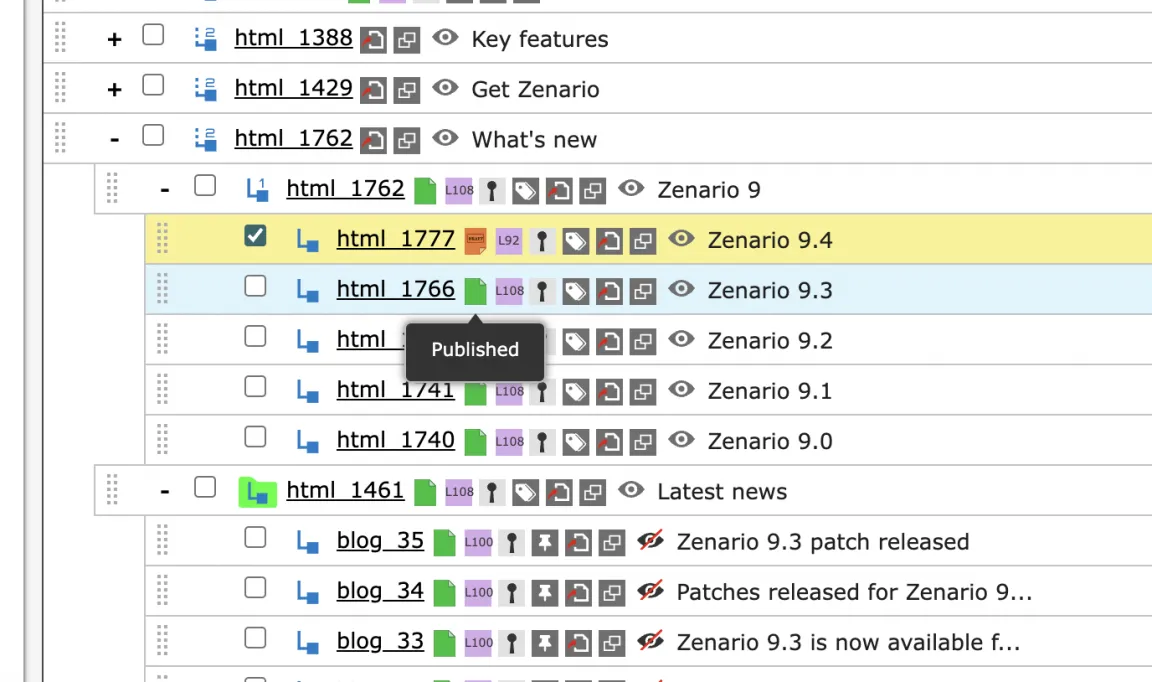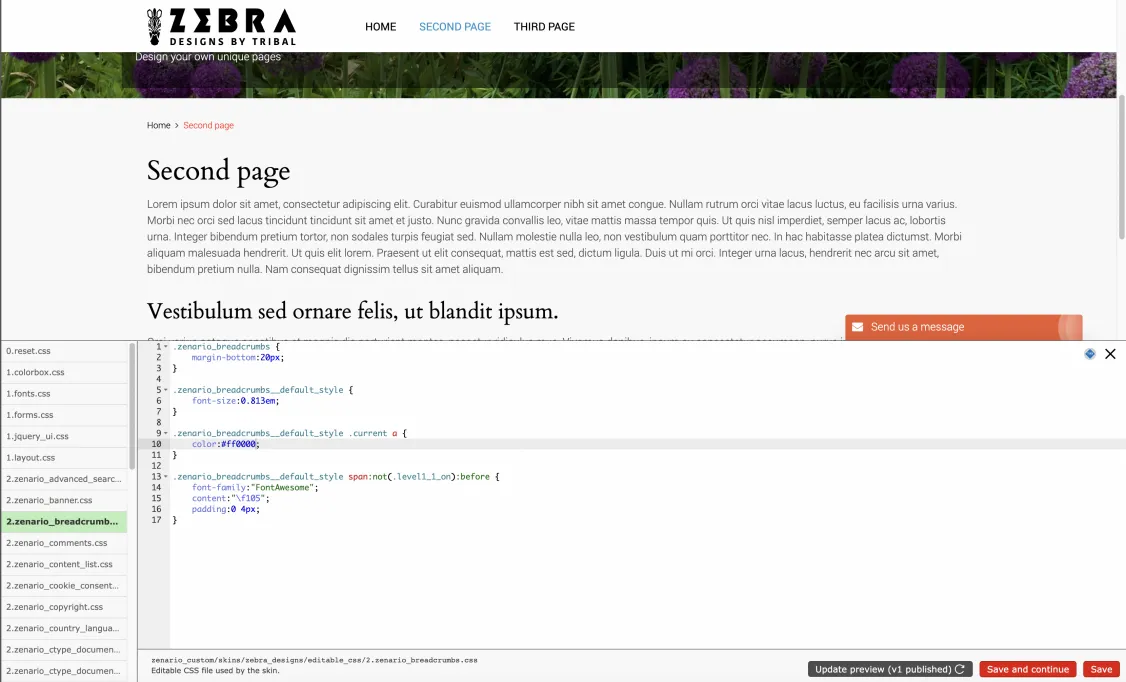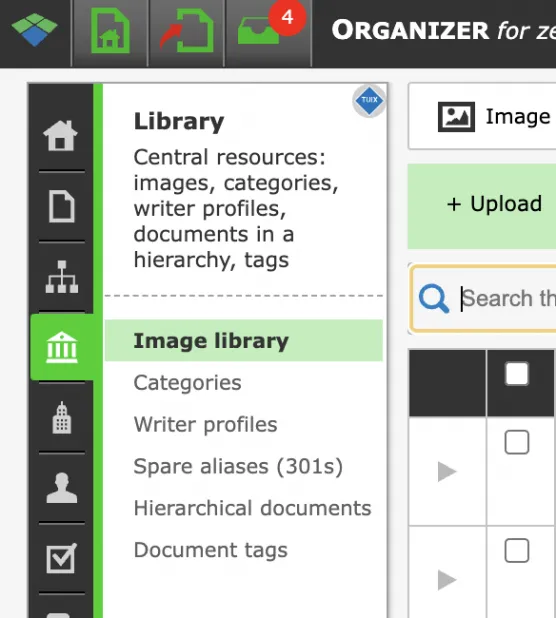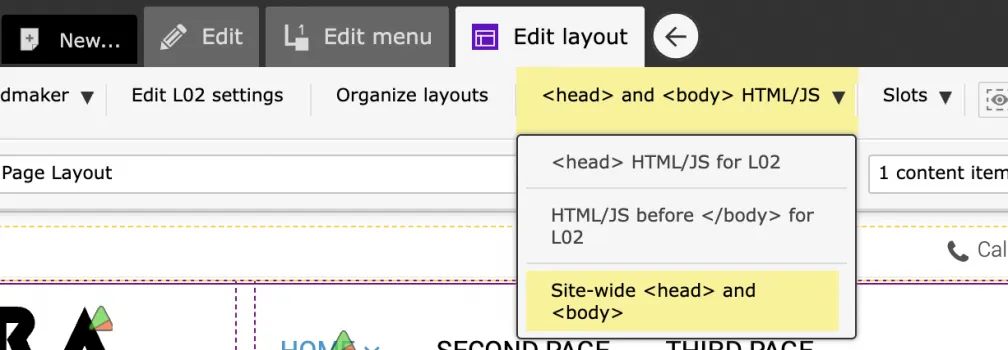Zenario 9.4
Improved SEO
When editing a content item's meta data, there are now colour-coded quality bars on title, alias and description boxes now giving feedback on how well they are written and affecting search engine optimisation.
Zenario is now more efficient, and only outputs CSS for modules that are running, thus resulting in smaller CSS files.
The robots.txt file is also updated, and there is now better support for Google's crawler to assess and visualise mobile web pages.
Cookie handling and Google reCaptcha
If a website visitor doesn't accept all cookies, or at least doesn't accept Analytics and Functional cookies, then any part of a site which uses Google reCaptcha (typically a form) may be ignoring a visitor's choice, and issues cookies anyway, disregarding the user's choice. This happens with the popular Google reCaptcha system, used in Zenario User Forms.
To deal with this, Zenario now has a setting in the Cookies site settings panel that lets an administrator determine how to present a form when the visitor has not accepted the relevant cookies. By default it will ask the visitor to accept cookies before displaying the form, but if preferred then Zenario will issue the form without showing the captcha.
Exporting content items
When exporting a list of content items from Organizer, we've improved the range of fields which are available in the export.
Menu nodes panel
We have improved the Organizer panel for menu nodes, so it now shows a lot more information about the menu node and the associated content item.

Actions when trashing and hiding
When trashing or hiding content items, there is now more assistance to help change things relating to that content item.
There is a box to let administrators determine what should happen to that item's alias, and it's easy to now make its alias become a spare alias, thus redirecting subsequent traffic to a different content item.
If there are are banners on the site with links to the item being trashed or hidden, there is helpful information about this, so that the administrator can make changes on those banners if desired.
CSS editing
We have improved the CSS skin editor. To access it, go to "Edit layout" tab and click "Edit skin CSS". You should see the new interface as follows:

The interface now shows the constituent files of the skin listed on the left hand side, separated by their functional area. You can edit them in the main editor area, and see a preview up above, before saving.
GridMaker
Our GridMaker system, for creating page layouts, now supports a site-wide header and footer.
So each layout can share a common header and footer, and any changes in plugins that are on the common header and footer now apply across every layout, instantly, making it easier to make wide-reaching changes.
The common header and footer are optional to use, and when sites are upgraded from 9.3 to 9.4 their layout will not automatically be changed.
Advanced Search
Our on-site Advanced Search plugin now has greater flexibility, as it can return results not only from HTML, document, news and blog content items, but now can also retrieve results from other data areas.
For example, ecommerce publications can respond with search results, making it easier to integrate a paid-for search system into the site-wide search.
Search now allows a search scope to be given, so as to limit the search to content items in a given category or categories. This allows a search to just search in one part of a large website.
Organizer "Library" area

Navigation in Organizer has been restructured, so there is now a Library area. This is now the home for images, categories, writer profiles, spare aliases, hierarchical documents and their tags.
The Documents area — for non-content item type documents, and arranged into folders — is now inside the library and called Hierarchical documents.
Content Summary Lists
There is now an option in CSLs on multi-language sites, so that a single item can be displayed from an equivalent chain of content items (thus avoiding showing the "same" item in two or more languages).
There is now the option on a CSL to display the menu node text of the linked-to content item.
User and contacts
When exporting user and contact data, country name and code can now be exported.
We've improved the sample export file to make it reflect the fields that have been enabled (in the relevant Dataset) for export.
We have also improved the import routine to fix a number of bugs, as well as to allow countries to be imported.
When deleting a user or contact, and deleting the linked data to that account, there is now much better information about what exactly will be deleted.
In places where a user chooses a password, such as when registering, or when resetting or changing their password, Zenario now uses the zxcvbn library to prevent users choosing easily-guessable passwords.
Forms
Organizer now shows a link between form responses and the users who entered those responses.
There is now a maximum file size setting for attachments (set in the Documents, images and file handling settings box).
A text box now has the option for validation as a phone number.
Security
Zenario now counts the number of failed login attempts against an administrator's account. When an administrator logs in, if there have been one or more failed attempts since their last login, Zenario warns the administrator of this.
Twig code allowed in site-wide <head> and <body>
We now allow Twig code to be embedded in the site-wise <head> of all pages, and just before the closing </body> tag of all pages.
Twig is a server-side executable language, similar to PHP, but which runs with heavy restrictions for security.
By allowing it to be placed in web pages in this way, it can invoke code on the server, for example to get environment variables for a content item, or about the current user.
To access it, go to a content item on the front end in admin mode, and click on the Layouts tab.

Then in the admin box, you can add Twig code.
For more about Twig, see this page here.
Comments/forums
We have improved the system of comments, which are used in forums.
Events
The event calendar plugin, when showing months of a year, now has the ability to start in a month other than January. So for example a school could show a calendar for its academic year running from September to August.
Improvements for sysadmins
Zenario 9.4 now properly supports PHP 8.1. There may be a few odd cases of deprecations or warnings, please feel free to send us feedback if you spot any!
Zenario now tests for a problem with the MySQL timezone data, which on some installations may not be loaded correctly. If an issue occurs, the admin diagnostics page warns about this and the "Other server programs" site settings box explains how to fix it.
There's improved control over user/administrator timeout. The SESSION_TIMEOUT constant (in zenario_siteconfig.php) should no longer be set to 0, but to a number (1800 seconds is suggested, i.e. 30 minutes).
The jQuery UI library has been updated to version 13.

